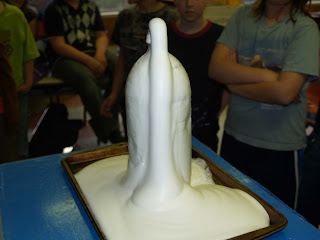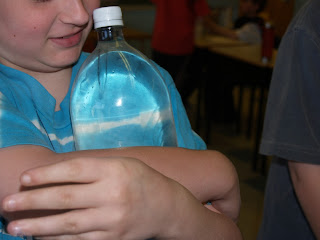I've been in a debate these last few days over multiplication tables. How do you teach them. I've heard from a number of people who say that they need to be memorized. My problem with this is that only a handful of students seem capable of doing this and with less time being spent studying at home this numbeer is getting smaller.
Students who are not successful in memorization are lost when memory fails. The student who forgets 4 x 6 makes no effort to solve this problem. He has failed.
I think that students need to be taught to recognize patterns. Then, when memory fails the real math begins.
"I don't know 4 x6 but 2 x 6 is 12 so if I double 12.."
" I don't know 4 x 6 but I know you can halve and double so 4 x6 is the same as 2 x 12 or 3 x 8 ."
Pentz Patterns in Math Name ______________________
2 x 3 = _______ 4 X 3 = ______
2 x 4 = _______ 4 x 4 = ______
2 x 9 = ______ 4 x 9 = ______
2 x 5 = ______ 4 x 5 = ______
2 x 8 = ______ 4 x 8 = ______
2 x 6 = ______ 4 x 6 = ______
2 x 7 = ______ 4 x 7 = ______
2 x 2 = ______ 4 x 2 = ______
2 x 1 = ______ 4 x 1 = ______
2 x 0 = ______ 4 x 0 = ______
Must Watch Video: “The Most Persistent Myth”
23 hours ago























